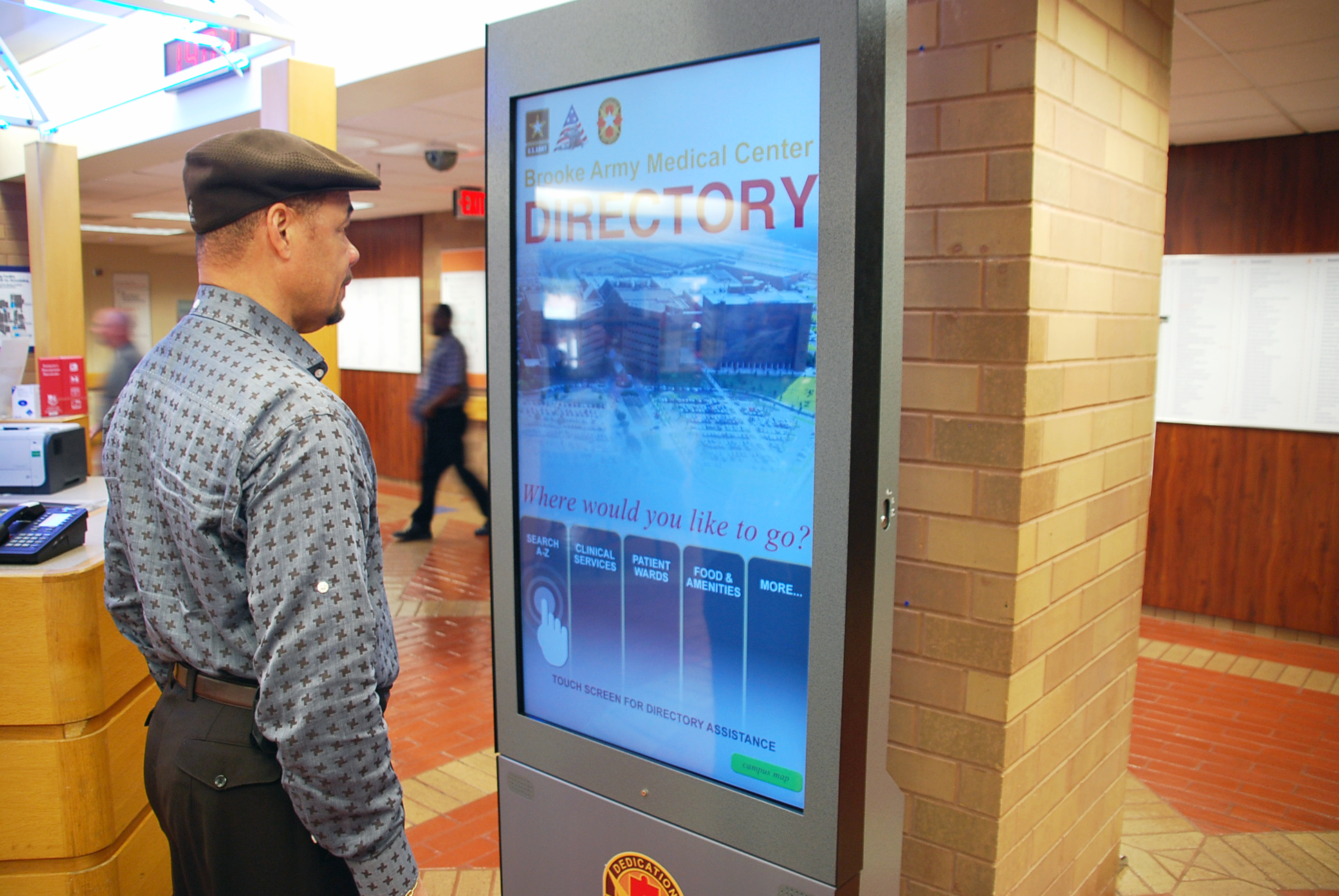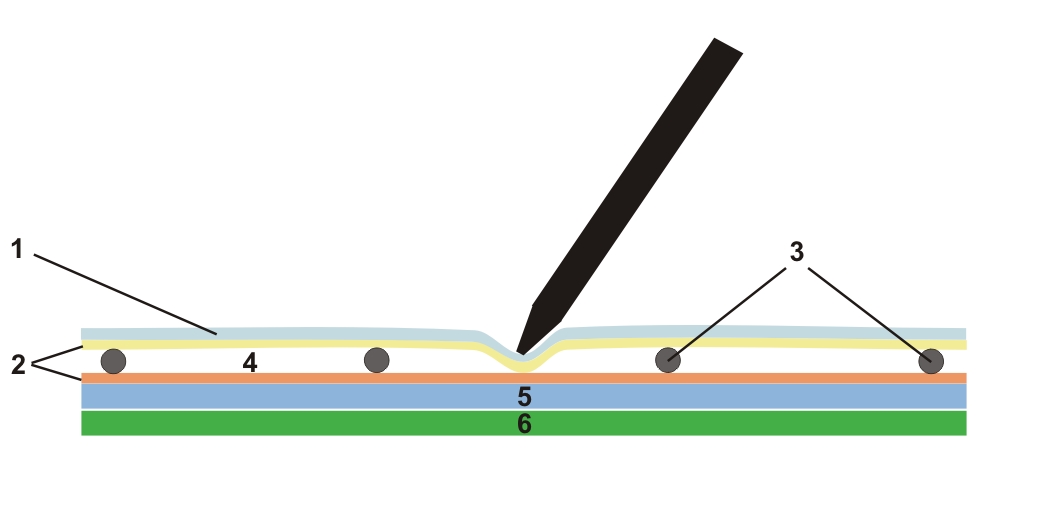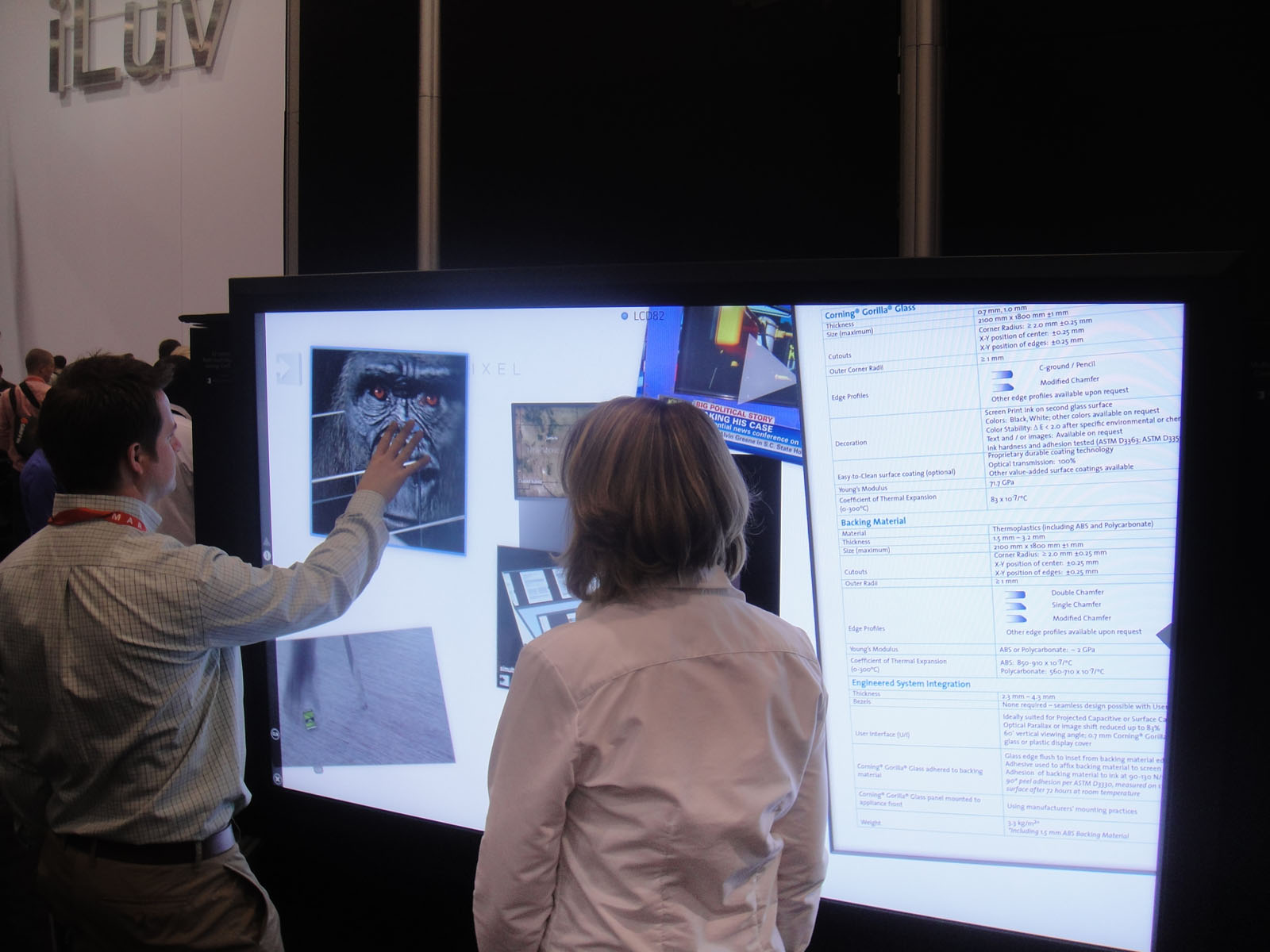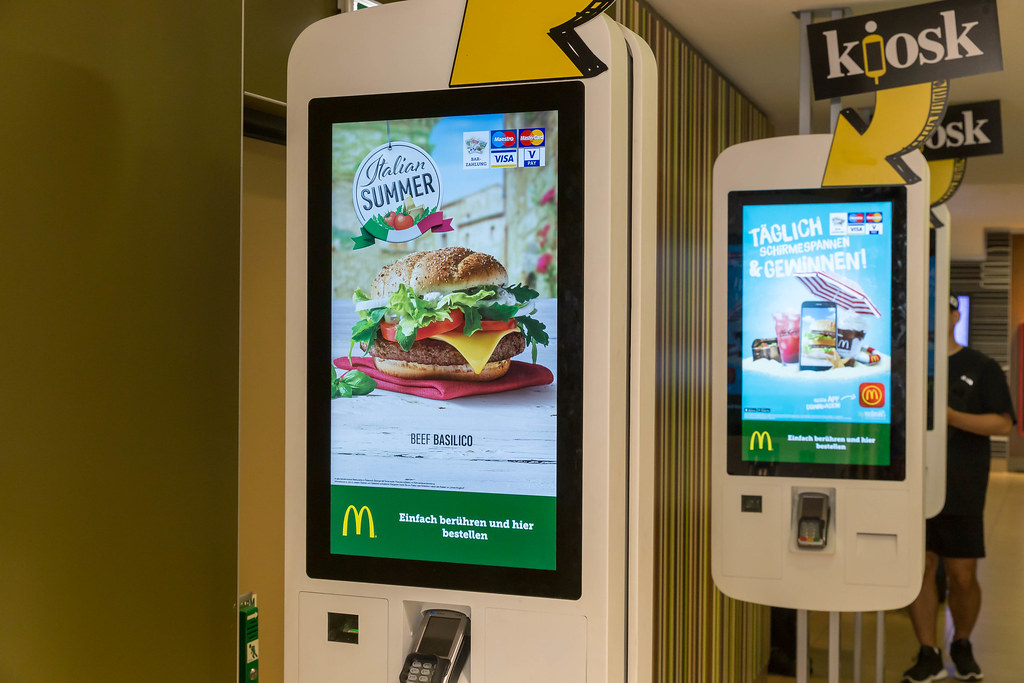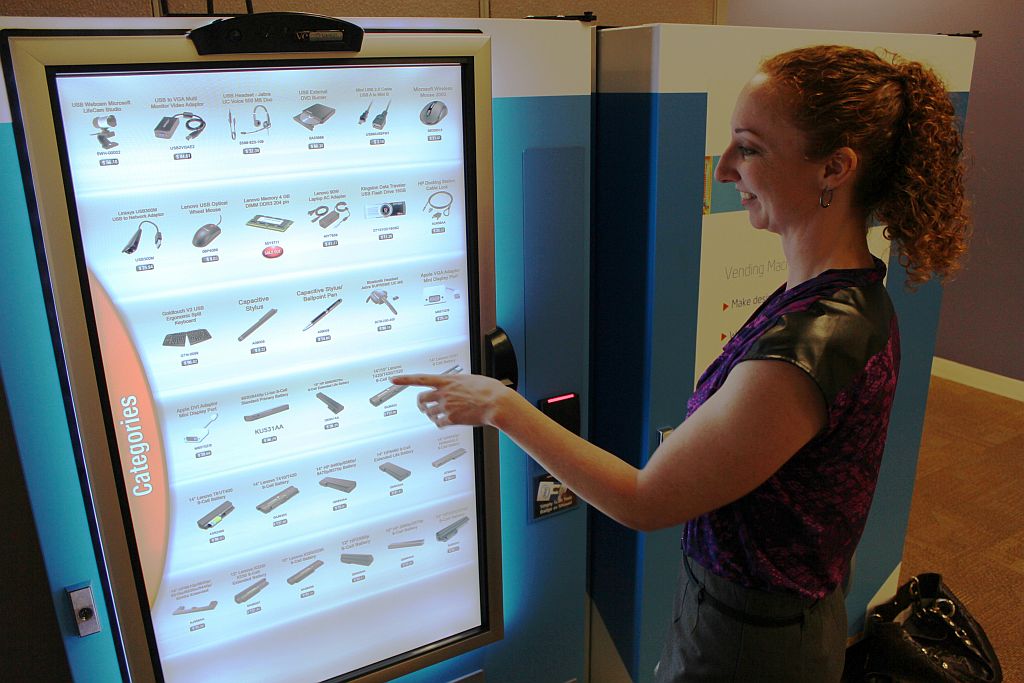In this article, we will take a detailed look at touch panel technology development in San Diego, the different touchscreen panel types, and the unique benefits each one offers, provided by Faytech North America, a Touch Screen Manufacturer from USA.
The modern world is increasing becoming digital, and along with this development, routine human interactions are also becoming digitised. A technology that is facilitating this digital evolution is touch screen technology. With the advent of cell phones and tablets, people around San Diego are using this technology every single day.
Touch screen technology found everywhere in San Diego
The usefulness of touchscreen technology are undeniable because it makes interactions with devices more intuitive and practical. Many businesses from San Diego are realising the benefits of adding touch technology to their internal and external processes as a way of streamlining interactions. Even though touch technology seems simple, it is actually quite complex.
Touch technology is now found everywhere in San Diego. It is in most computer products like cell phones, tablets, kiosks, photo booths, kitchen appliances, ticket vending machines, ATMs, and even car GPS systems.
There are five main types of touchscreen technologies, with each one boasting unique functions and benefits which we will cover below.
Implementing touch screen applications
In this article, we will also address why it might be a good idea for your organisation to consider adding touchscreen technology for both internal and external operations.
The keyboard – while seemingly basic and yet it is indispensable for a fair number of electronic devices – is ceasing to be the main way people communicate using technology.
Touchscreen solutions that allow for deft finger presses, swipes, and pinching motions allow people in San Diego to navigate the Internet, browse photo galleries, use maps, sort contacts, and find personal information in a way that is quick, convenient, and intuitive. Touch screens are making it easier to master and use devices than traditional keyboards or mice.
In many cases, using a computer keyboard or mouse now seems outdated because touchscreens have become the intuitive technology of the future.
Before deciding which type of touch screen technology is appropriate for your organisation needs, the following questions must be considered:
– How will your target market in San Diego interact with the touch technology?
– What sort of environment or industry will it operate in?
– What is an appropriate screen size?
– What is the best solution: a kiosk, a computer, or simply a touch monitor?
To understand the full potential of touch technology in San Diego , we will cover the following topics in this article:
What Different Types of Touch Technology Exist in San Diego ?
What is Resistive Touch Technology?
What is Optical Imaging Touch?
What is Projected Capacitive Touch?
What is Infrared Touch?
Touch Screen Technologies Compared in San Diego
Who Uses Touch Screen Technology in San Diego ?
What are the Benefits Of Touch Screen Technology in San Diego ?
What Features Should A Touch Screen Have?
How To Choose A Touch Panel?
Strength and Weakness of Capacitive and Resistive Touch Screen Monitors
What Different Types of Touch Technology Exist in San Diego ?
In the touchscreen technology niche, a few different technologies are available in the marketplace in San Diego. Each touchscreen tech has its own unique characteristics and benefits.
The most common touch screen monitor technologies are: resistive, projected capacitive, optical, and infrared. Depending upon your industry or organization’s specific needs or demands, each touch screen type has unique applications.
What is Resistive Touch Technology?
Resistive touchscreen technology in San Diego is available in a variety of different devices which include touch screen monitors and even automobile navigation systems. This type of touchscreen includes resistive panels which are pressure sensitive. This means the resistive touch displays respond to the pressure from touches occurring directly on a screen in order to detect interactions.
Resistive touch screens tend to be single-point-touchscreen displays. They are also usually smaller than 20 inches. What sets them apart from other touchscreen technologies is that resistive touch panels utilize two transparent electrode film layers that are separated by spacers. The pressure input-method allows resistive panels to be operated using most touch types; for example, from a finger, a pen, stylus, or even a gloved hand.
Because of the dual transparent film layers on the panel, light transmittance is weaker when compared to other touchscreen technologies. Additionally, resistive touch panels are not one the most durable touch panel technologies since it operates using pressure and excessive pressure can damage the display.
Resistive touch technology in San Diego is less expensive when compared to other touch panel technologies, and because of this, they are a good option for single-point-touch screen applications.
Resistive Touch Pros:
– Cost-effective
– Multiple command options: finger, stylus, and gloved touch
– Functions with drops of water on screen
Resistive Touch Cons:
– Weak light transmittance
– Less durable
– True multi-touch unsupported
What is Optical Imaging Touch?
Optical imaging touch technology utilizes infrared cameras and light in order to detect touch interactions on a panel. The accuracy of touch detection on an optical imaging touch display varies based upon the components being used.
In general, optical imaging touch screen panels in San Diego have multi-touch input capacity and tend to have a size ranging from 19 to 100 inches. As touch recognition on optical imaging touch devices functions through imaging, a touch input – whether by finger, stylus, or gloved hand – can be utilized to interact with a screen. The light transmittance on these optical imaging touchscreens are very accurate since there no obstructing coating is applied directly to the screen.
Optical touch screen displays tend to last for quite a while since the light touches used with this type of technical variant has less wear and tear than other display types.
Optical Imaging TouchPros:
– High light transmittance capacity
– Durability
– Multiple input methods (finger, stylus, gloved hand)
– Multi-touch capacity
Optical Imaging Touch Cons:
– Size; larger than other touch technologies
What is Projected Capacitive Touch?
The most common touch screen technology available for the smartphone market in San Diego is projected capacitive touch technology. This is what is used in iPhone displays and good percentage of the cell phone user market is already familiar with projective capacitive touch technology.
Projected capacitive touch technology tends to be utilized in smaller touch screen devices because it is highly precise and has a speedy response time.
Multi-point touch is available for most projected capacitive touch panels these displays tend to have a size of under 32 inches.
Projected capacitive touch screens detect touch input through electrical currents. This makes it a challenge to design larger-sized projected capacitive touch screen panels. A projected capacitive touch panel can utilize finger or conductive pen touches, but unlike resistive touch technology it cannot detect gloved touch.
Projected capacitive touch panel’s light transmittance is known to be very good along with their touch detection accuracy. The plastic and glass coatings on a projected capacitive touch display is durable and usually dust resistant. Because of this, projected capacitive touch screens are frequently stated to provide the best user experiences when compared to other touch screen technologies.
Projected Capacitive Touch Pros:
– Great user experience
– High touch input accuracy
– High light transmittance capacity
– Durability
– Multi-touch functionality
Projected Capacitive Touch Cons:
– No gloved touch
– More expensive
What is Infrared Touch?
Light beam interruption is utilized as a means to detect input commands in infrared touch technology. Infrared touch display technology in San Diego works with infrared beams organized in a grid over the panel and each touch point is calculated when a beam is interrupted.
Interestingly, infrared touchscreens utilize multi-point touch inputs and are available in sizes between 20 to 150 inches. Touch inputs can be realized on an infrared touch panel using a finger, a stylus, or even a gloved finger. However, touch detection accuracy tend to vary due to the quality of the internal components.
The infrared touch panel technology in San Diego tends to result in decent light transmittance. They are durable, but if direct sunlight comes into contact with the infrared touchscreen, it can add glare and reflections which negatively impacts the user experience. Infrared touch is another technology that is often utilized in applications requiring larger touch screen sizes.
Infrared Touch Pros:
– High light transmittance capacity
– Durability
– Multi-touch functionality
Infrared Touch Cons:
– Do not function well in direct sunlight
Touch Screen Technologies Compared in San Diego
Resistive and Saw Touch Screen Technology:
– Best for high durability
– 1-point- touch
– Glove and hand writing support
Optical Imaging Touch Screen Technology:
– Best for high image clarity
– Higher touch sensitivity
– Supports multi-touch
Projected Capacitive Touch Screen Technology:
– Best for multi-touch support
– Durability
– Sensitivity
– Gesture control
Infrared Touch Screen Technology:
– Best for high image clarity
– High durability
– Glove support
Who Uses Touch Screen Technology in San Diego?
As mentioned, there is a strong draw towards touch screen technology across a broad range of industries and organizations. Businesses in San Diego are adopting touch screen displays because it streamlines manner internal and external processes.
Many organizations from San Diego are realizing how advantageous touch screen technology is as it allows employees to redirect their energies towards other more profitable tasks and it helps guide customers toward the relevant solutions that they are seeking. Overall, most organizations agree that by implementing touch screen displays they increase productivity, enhance the customer experience, and they are simple to use for most people.
The following are examples of industries that utilize touch screen technology:
Smart retail and POS – Many chain stores, department stores, and even product/service kiosks in San Diego are beginning to use touch screen displays. These allow potential customers to quickly check inventory, get prices, browse for related products/services, and make purchases without need to interact with employees. Most people are growing rather independent and do not need to ask for a clerk to lookup a product’s price or availability in an antiquated software system when they can just as quickly do it themselves as ask someone else to do it for them.
Education – High schools, colleges, and universities in San Diego are beginning to utilize touch screen computers in the classroom and also touch screen kiosks in public areas so that they can make reservations, schedule classes, pay bills, buy sporting event tickets, and much more. Touch screen displays can facilitate the learning experience for students of all ages.
Industrial Use – Manufacturers from San Diego are finding that using resilient touch screen displays can speed up processes that used to require a person to sit down, take off gloves, and type at a computer. Now employees can operate machinery while wearing gloves and quickly choose icons that represent process activation.
Financial Services Industry – Customers in San Diego can now pay bills and purchase services at bank, credit union, insurance agencies, and other financial institutions with a few simple selections on an interactive touch display.
Medical Applications – Surgeons, doctors, nurses, and technicians in San Diego can now use touch screen technology to input patient records, operate machinery, operate on patients in wet rooms, do research and much more. The interactive touch displays can be sterilized and allow for staff to safely work using gloves.
The Food & Beverage Industry – Long lines at fast food restaurant establishments in San Diego during peak times have always problematic for customers. People waiting too long for food services become impatient and this results in the loss of customers and potentially poor reviews of a restaurant. Touch screen solutions serve as self-service points for customers to order. Additionally, while customers are waiting for their orders, promotions, news, and events can be played on the inactive touch displays to keep customers distracted.
Transportation – In the past, travelers used to have to wait in line for a boarding pass. Now, most airports are installing touch screen technology to expedite this process. In most cases, all a person needs to do is scan a passport, answer a few questions, and you’re ready to go.
Institutions – Governmental institutions in San Diego are leveraging digital signatures in order to digitize workflows so that they can save time and money. Touch screen digital signature solution technology offers the functionality of traditional pen and paper signatures but with heightened security, ease of storage, and more. Digitally signed documents are easy to store without physical filing cabinets. Additionally, the documents can be digitally sent to customers via email and are easy to retrieve for future reference.
Reference source from : http://www.metroclick.com/touch-screen-display/uses-touchscreen-technology-different-fields/
What are the Benefits Of Touch Screen Technology in San Diego?
Touch screen technology results in faster display operations and interactions. In a business setting, the reduction in time spent on routine operations results in numerous benefits, which include: shorter wait times, faster services, more predictability, and more streamlined decision-making. Such benefits create a domino effect of both positive outcomes and increased profitability. The more quickly an organization can move customers in San Diego through a process this tends to result in higher customer satisfaction, a better customer experience, and often, an increase in brand loyalty.
Due to the implementation of touch screen cell phones, touch technology is now found everywhere. Because it is so intuitive and easy to work with, the newbie user is almost immediately an expert. The benefit of touch technology is that it is both easy to implement, and it has a relatively short learning curve. The short learning curve helps employees to use touch technology almost immediately with very little technical training.
Because touch screen displays are so flexible in how they can be used, touch screen technology positively enhances a user’s overall experience. In this day and age of instant gratification and infinite distractions, displaying engaging visual content that is interactive will help an organization keep a customer’s attention.
Touch screen displays allow users to serve themselves and in many ways inspire independence. This is extremely useful for mall and hotel information services or restaurants in San Diego. People do not need to ask for information or wait for a waitress to order their meal. Additionally, from an organization’s perspective, this allows an employe to be free to focus on higher priority tasks that are of more importance to the organization.
Touch screens are designed to endure constant physical interactions and will handle a fair amount of abuse. Most touch screen manufacturers will create touch displays that maximize a device’s lifespan and can handle a degree of accidental damage.
Implementing touch screen technology removes the need for peripheral accessories; reduces space that was once taken up by computer towers, keyboards, mice, and other accessories; and through faster operations, results in more streamlined productivity.
Touch screen technology will increase efficiency in the workplace over San Diego when it is properly set up and optimized to meet the intended outcomes. For example, if the goal is to reduce queue times in a bank lobby, then touch screen technology in the form of an interactive touch kiosk can be strategically positioned and programmed with a variety of options that guides the user to the desired outcome. This efficiency translates into enhanced revenues, decreased wait times, and the ability to help customize the customer experience.
Digitizing a workflow with touch screen technology is a way to reduce costs by eliminating the need for common office supplies such as paper and ink for printed forms. Additionally, touch screen technology can reduce the cost of storage and office space by removing the need for physical storage locations.
What Features Should A Touch Screen Have?
In general, touch screen technologies in San Diego should come with the following characteristics:
1. Touch display technology should be intuitive.
2. Touch screen technology should be user-friendly so as to dramatically reduce any need for training
3. Touch panels should be easy to add to a location or office.
4. Touch screen technologies should be compatible with a variety of different operating systems.
5. Touch screen technologies should be durable and withstand standard usage in the environment for which they are rated.
Touch screens should meet these minimal requirements for your specific industry before deciding to add them. If they are not durable, not intuitive, not time-saving, or not compatible with an existing operating system, then they will be a waste of resources. In most cases, the majority of touch screen manufacturers in San Diego will meet the minimal criteria.
If your organization requires industrial strength solutions that are weatherproof, splash resistant, or designed for outdoor usage, then there are manufacturers who can supply heavy duty touch screen solutions.
How To Choose A Touch Panel?
There are various sorts of touch screen products and each one has different characteristics, capabilities, and benefits. One of the primary factors to consider is your organization’s budget in San Diego for commercial touch screen solutions since a certain type of touch screen technology might have more features than another, it may also cost much more to implement.
A good starting point when looking into implementing touch screen technology is to consider the following questions:
– Will a touch screen display be used for point-of-sale operations?
– Will customers need a way to sign digitally?
– Will you need a combination of POS and digital signatures?
Additionally, consider one’s business objectives in San Diego:
– Is a touch screen solution needed to reduce queue times?
– Are you exploring new ways for customers to interact with your organization?
– Is a safer way need for customer to officially sign for services?
Whatever the reason is for implementing touch screen technology in San Diego, it does appear to be the way of the future. We hope this article has opened your eyes to the possibilities that exist within touch solutions and how touch screens will likely become even more prominent in the future.
Now that you know a little bit more about the different types of touchscreens it is important to consider the various features for the hardware. There are important factors to look for so that your organization in San Diego run more efficiently:
– The appropriate serial and USB interfaces
– Having a way to manage cables
– Where to locate external power supplies
Strength and Weakness of Capacitive and Resistive Touch Screen Monitors
Capacitive and resistive touchscreen displays have their respective strengths and weaknesses. In many cases, price is one important factor when it comes to choosing a touch screen solution in San Diego, but usability should always have the most importance.
The biggest consideration is to contemplate who might be using the touchscreen technologies in addition to the location of the screens in San Diego. Another important factor is the size of the screen because if the touch screen is not big enough, it will not be visible. Conversely, if it is too big then the touchscreen might seem out of place or potentially display too much private information.
Choosing the best touch screen does not only resolve a utilitarian need, it also gives a restaurant, commercial space, or retail establishment from San Diego a more modern vibe. Once the important business considerations are resolved, it should be easier to identify the specific type of touchscreen solution that will work the best for your organizational needs.
Remember, ask your touch screen manufacturer in San Diego for their recommendations if you have any doubts.
- 14 Ways to Boost Your Understanding of the Future of Touch Screen Technology in San Diego
- 14 Points to Help You Implement Touch Screen Technology in Solana Beach
- 14 Key Issues to Boost Your Understanding of the Future of Touch Screen Technology in Encinitas
- 14 Points to Understand the Future of Touch Screen Technology in Del Mar
- 14 Areas to Understand the Future of Touch Screen Technology in Rancho Santa Fe
- 14 Notes to Learn the Future of Touch Screen Technology in Fairbanks Ranch
